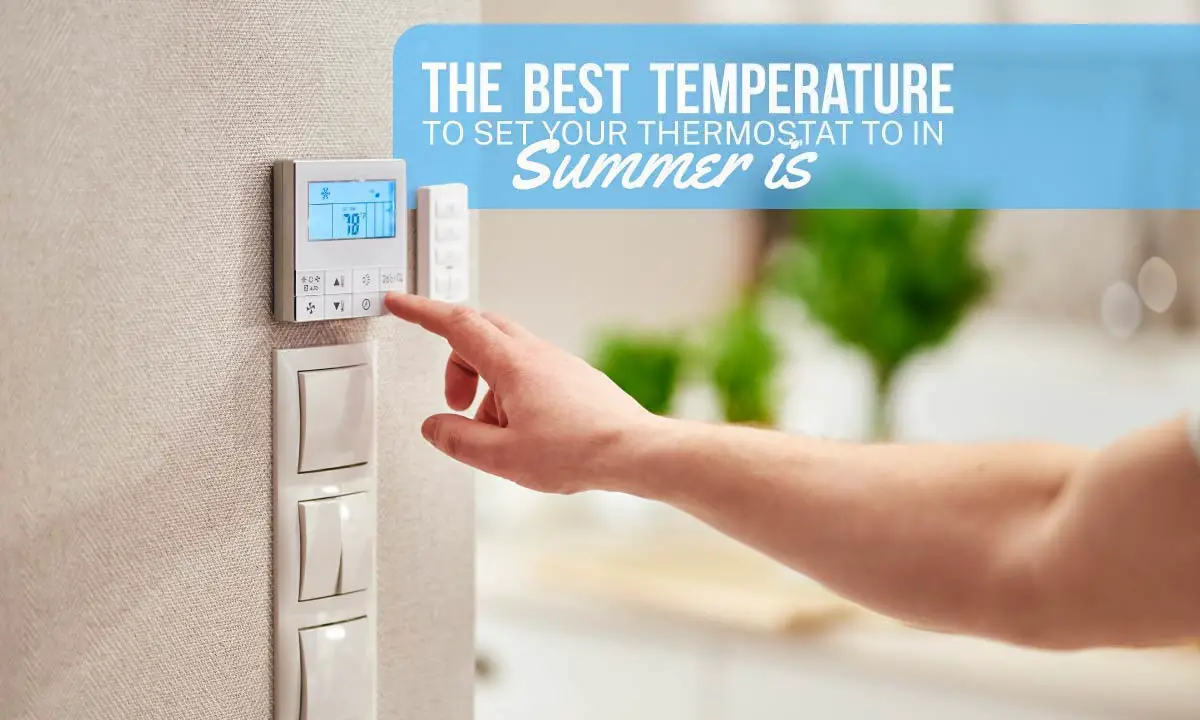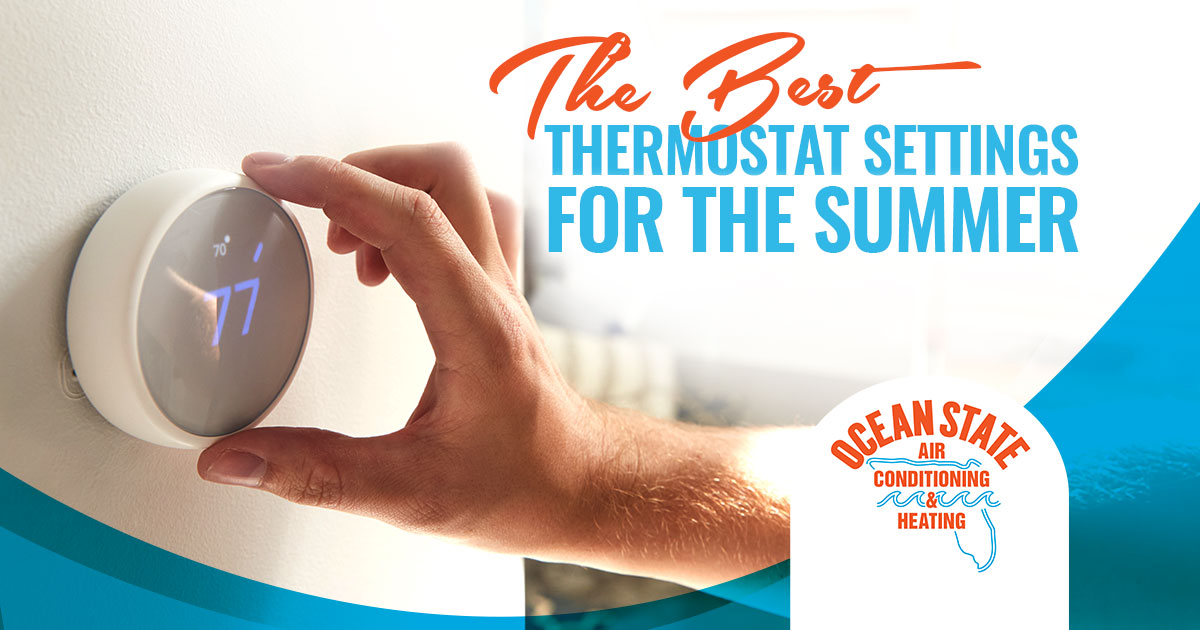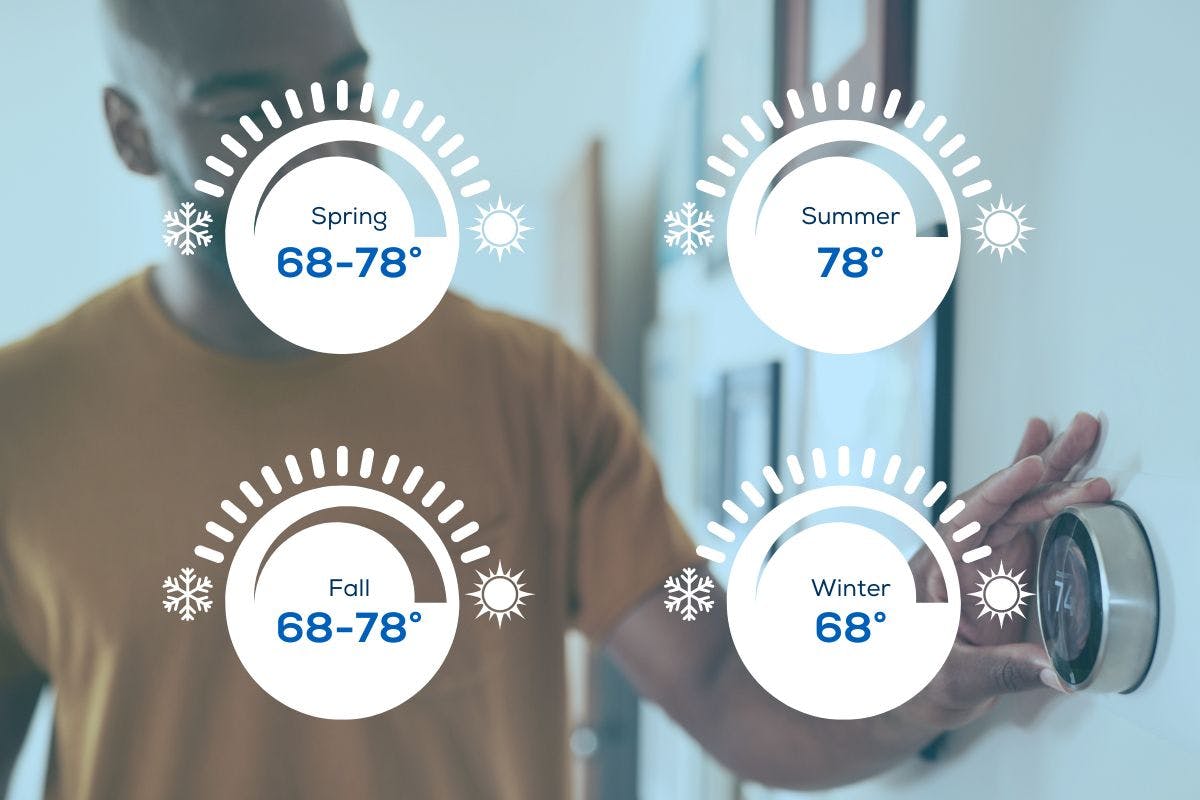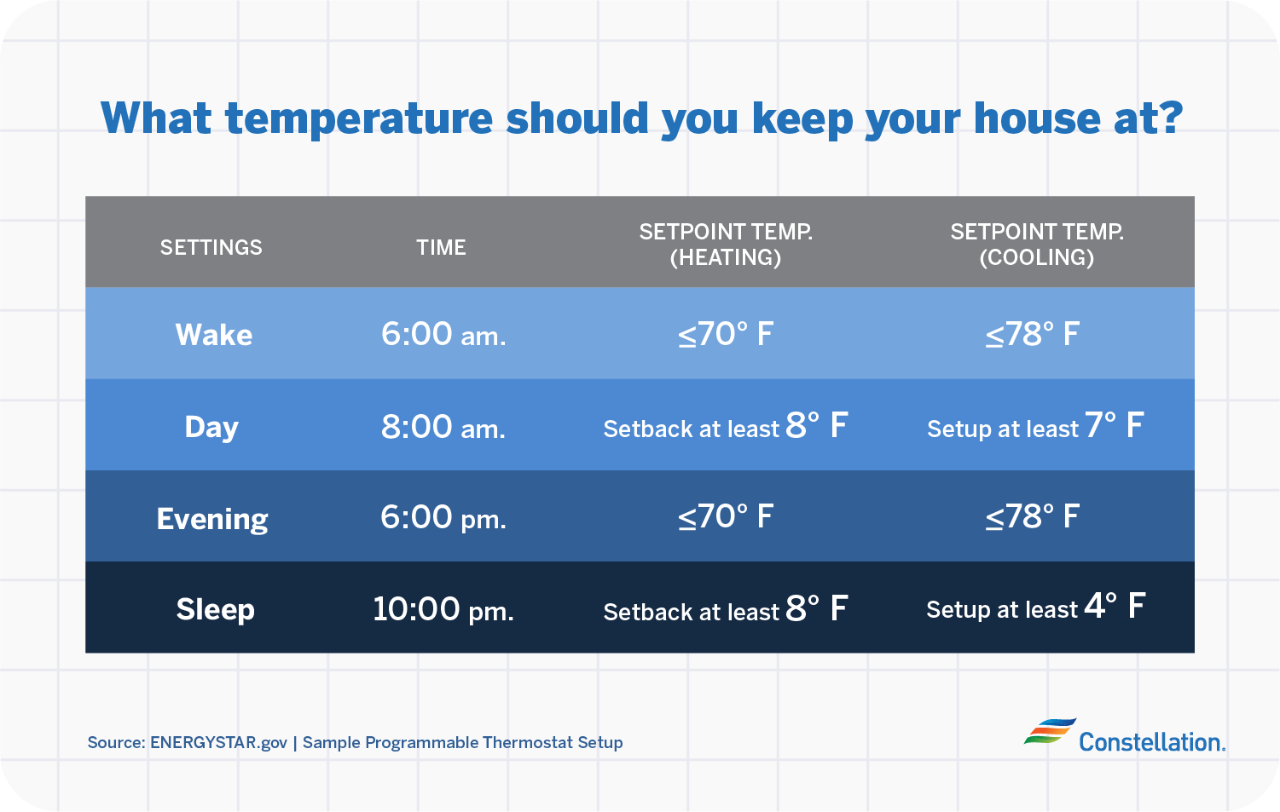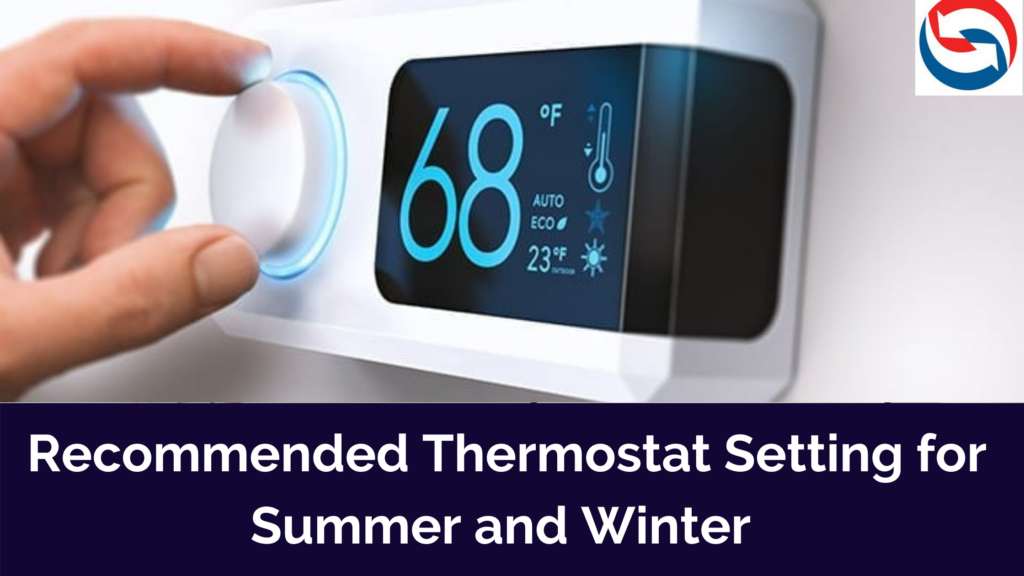What Temp Should Thermostat Be In Summer

Decoding the Summer Thermostat Setting: Finding the Sweet Spot for Comfort and Efficiency
As summer heat intensifies, the battle against soaring temperatures often translates to a constant adjustment of the thermostat. But what's the ideal thermostat setting for summer? Finding the right balance between comfort, energy efficiency, and cost savings can feel like a delicate balancing act. This comprehensive guide delves into the intricacies of summer thermostat settings, catering to homeowners, HVAC technicians, and facility managers alike.
Understanding the Factors at Play
Determining the optimal thermostat setting involves considering several interconnected factors:
- Personal Comfort Preferences: What temperature feels comfortable varies significantly from person to person. Factors like activity level, clothing, and individual metabolism all play a role.
- Energy Efficiency Goals: The lower you set your thermostat, the more energy your air conditioner consumes. Finding a setting that keeps you comfortable without excessive energy use is key.
- Cost Considerations: Energy consumption directly impacts your utility bills. A lower thermostat setting translates to higher electricity costs.
- Home Insulation: A well-insulated home retains cool air more effectively, allowing you to maintain a comfortable temperature with less effort. Poor insulation leads to greater energy loss and higher cooling costs.
- HVAC System Efficiency: The SEER (Seasonal Energy Efficiency Ratio) rating of your air conditioner indicates its energy efficiency. Higher SEER ratings translate to lower energy consumption for the same cooling output. Older systems typically have lower SEER ratings than newer models.
- Home Location and Climate: Geographic location significantly impacts the ideal thermostat setting. A home in a humid climate may require a lower setting to dehumidify the air, while a home in a dry climate may find a slightly higher setting comfortable.
The Recommended Thermostat Setting: A Starting Point
While personal preferences vary, the U.S. Department of Energy recommends setting your thermostat to 78°F (26°C) when you’re home and need cooling. This setting provides a reasonable balance between comfort and energy savings. However, this is merely a starting point. Experimenting within a few degrees of this setting can help you find your personal sweet spot.
Adjusting for Occupancy: Saving Energy While You're Away
One of the most effective ways to save energy during the summer is to adjust your thermostat when you're away from home. Raising the thermostat by 7-10°F (4-6°C) while you're at work or on vacation can significantly reduce energy consumption. For example, setting your thermostat to 85°F (29°C) while you're away can save you money without causing excessive heat buildup inside your home. Consider using a programmable or smart thermostat to automate these adjustments.
Programmable vs. Smart Thermostats: Automating Energy Savings
Programmable thermostats allow you to set pre-determined temperature schedules based on your daily routines. You can program different temperatures for different times of the day, ensuring that your home is comfortable when you're there and energy-efficient when you're away. Smart thermostats take automation a step further. They learn your habits and automatically adjust the temperature based on your preferences and occupancy. Many smart thermostats also offer remote control via smartphone apps, allowing you to adjust the temperature from anywhere. Some even integrate with other smart home devices for enhanced energy management.
Addressing Humidity: A Key to Summer Comfort
In humid climates, high humidity levels can make even a moderate temperature feel uncomfortable. Dehumidifying the air can significantly improve comfort, even if the temperature remains relatively high. Some air conditioners have a "dry" mode that prioritizes dehumidification. Using this mode can allow you to set the thermostat slightly higher while still maintaining a comfortable level of humidity. Consider using a dehumidifier in conjunction with your air conditioner to further reduce humidity levels.
Optimizing Air Conditioner Performance: Tips for Homeowners and Technicians
Beyond thermostat settings, several factors can impact the performance and efficiency of your air conditioning system:
- Regular Maintenance: Schedule annual maintenance checks with a qualified HVAC technician. This includes cleaning or replacing air filters, inspecting refrigerant levels, and cleaning the condenser coils.
- Air Filter Replacement: Dirty air filters restrict airflow, forcing your air conditioner to work harder and consume more energy. Replace your air filter every 1-3 months, or more frequently if you have pets or allergies.
- Sealing Air Leaks: Seal any air leaks around windows, doors, and ductwork to prevent cool air from escaping and hot air from entering. Use caulk, weather stripping, or spray foam to seal these leaks.
- Insulation: Ensure that your home is properly insulated, especially in the attic and walls. Adequate insulation helps to maintain a consistent temperature and reduce energy loss.
- Shade: Plant trees or install awnings to shade your home from direct sunlight. This can significantly reduce the amount of heat entering your home, lowering your cooling costs.
- Ductwork Inspection: Inspect your ductwork for leaks or damage. Leaky ductwork can waste a significant amount of energy, as cool air escapes before it reaches the vents.
- Consider a Smart Vent System: Smart vent systems work by selectively opening and closing vents in different rooms based on occupancy and temperature, directing cool air where it's needed most and avoiding cooling empty rooms.
HVAC System Efficiency: Understanding SEER and EER Ratings
The SEER (Seasonal Energy Efficiency Ratio) rating measures the cooling efficiency of an air conditioner over an entire cooling season. A higher SEER rating indicates a more energy-efficient system. The minimum SEER rating currently required for new air conditioners is 14 in most regions. The EER (Energy Efficiency Ratio) measures the cooling efficiency of an air conditioner at a specific operating point (e.g., a specific temperature and humidity level). Both SEER and EER ratings are important indicators of air conditioner efficiency. When purchasing a new air conditioner, consider the SEER and EER ratings to ensure that you're getting a system that will save you money on energy bills.
Cost Comparison: Investing in Energy Efficiency
While higher-efficiency air conditioners typically have a higher upfront cost, they can save you money in the long run through lower energy bills. Calculate the payback period for a more efficient system by comparing the upfront cost difference with the annual energy savings. Consider factors like your climate, energy prices, and usage patterns when making this calculation. Incentives and rebates from utility companies or government programs can also help offset the upfront cost of energy-efficient upgrades. Older HVAC systems (10+ years) often operate significantly less efficiently than newer models. Replacing an old, inefficient system with a new, high-efficiency model can result in substantial energy savings and improved comfort.
Facility Management Considerations: Optimizing Cooling in Large Buildings
For facility managers responsible for cooling large buildings, optimizing thermostat settings and HVAC system performance is crucial for managing energy costs and maintaining occupant comfort. Consider implementing the following strategies:
- Zone Control: Divide the building into zones with independent thermostat controls. This allows you to adjust the temperature in different areas based on occupancy and usage patterns.
- Building Automation Systems (BAS): Implement a BAS to automatically control and optimize HVAC system performance. BAS systems can monitor temperature, humidity, and occupancy levels, and adjust settings accordingly.
- Demand Response Programs: Participate in demand response programs offered by utility companies. These programs provide incentives for reducing energy consumption during peak demand periods.
- Regular Audits: Conduct regular energy audits to identify areas for improvement and optimize HVAC system performance.
- Employee Education: Educate employees about energy-saving practices, such as turning off lights and computers when not in use, and reporting any HVAC system issues.
Conclusion: Mastering the Art of Summer Cooling
Finding the ideal thermostat setting for summer is a dynamic process that requires balancing personal comfort, energy efficiency, and cost savings. By understanding the factors that influence cooling needs, implementing smart thermostat strategies, optimizing HVAC system performance, and embracing energy-efficient practices, homeowners, HVAC technicians, and facility managers can all achieve optimal cooling comfort while minimizing energy consumption and costs. Remember, the 78°F recommendation is a guideline, and experimenting with slight adjustments, alongside preventative maintenance and smart technology implementation, will lead you to your personalized, most efficient and comfortable summer setting.


